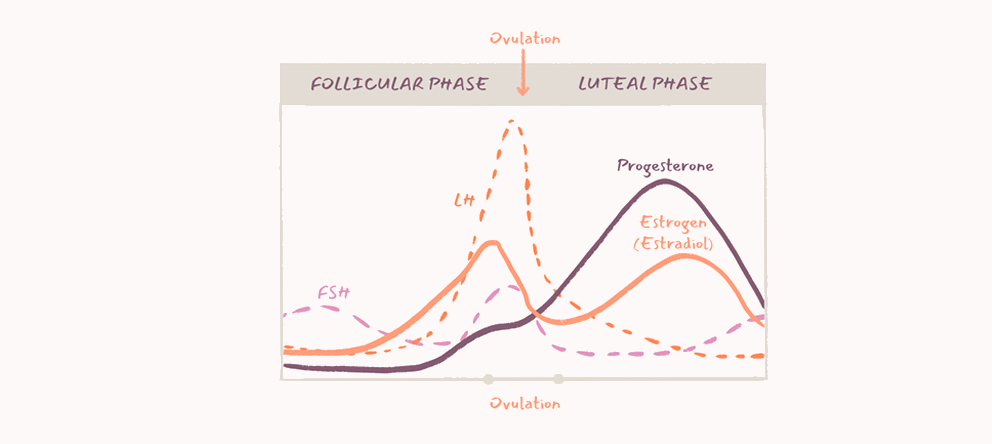
Menstrual Cycle Physiology: Correlating the Ovarian and Uterine Cycles Note: Some charts show different relative levels of the gonadotropins (LH and FSH) to estrogen and progesterone, but the key is to compare the relative levels of estrogen with progesterone, and to observe how they change compared to the gonadotropins. Ovarian Cycle 1. Follicular phase (around 10-14 days long) • Starts at puberty (unclear mechanisms), 6-20 follicles re-activated per month. • One follicle outpaces the others, continues to develop into the mature follicle (others degenerate). • The process also involves hormones released by theca and granulosa cells (activin and inhibin) that affect follicle development as well. See also "Follicular Phase Explained" slide. 2. Ovulation • Release of secondary oocyte around day 14 (can vary) • Triggered mostly by LH surge. See also "Ovulation Explained" slide. 3. Luteal phase (always 14 days long) • Follows release of oocyte • Transformation of granulosa and theca cells of the follicle into the corpus luteum, which secretes progesterone and a bit of estrogen to negatively feed back on the anterior pituitary and inhibit the growth of new follicles. • Corpus luteum degenerates in 14 days if no fertilization (thus, luteal phase is always 14 days long). See also "Luteal Phase Explained" slide. Uterine Cycle: 1. Menses (menstrual bleeding) • Occurs during the first part of the follicular phase of the ovarian cycle due to the sharp decline in progesterone 2. Proliferative phase • Before and up to ovulation, the endometrium adds new cell layers, especially due to estrogen • During late proliferative phase: estrogen makes cervical mucous thinner, more abundant, and stringier, which allows it to be penetrated by sperm. 3. Secretory phase • Corpus luteum hormones, mostly progesterone, limit endometrial growth while endometrial secretions. • After ovulation, progesterone causes mucus to become thick and tacky, less likely to be penetrated by sperm. #UterineCycle #MenstrualCycle #OvarianCycle #pathophysiology #comparison #endocrinology

The menstrual cycle. The pituitary and ovarian hormones regulating the
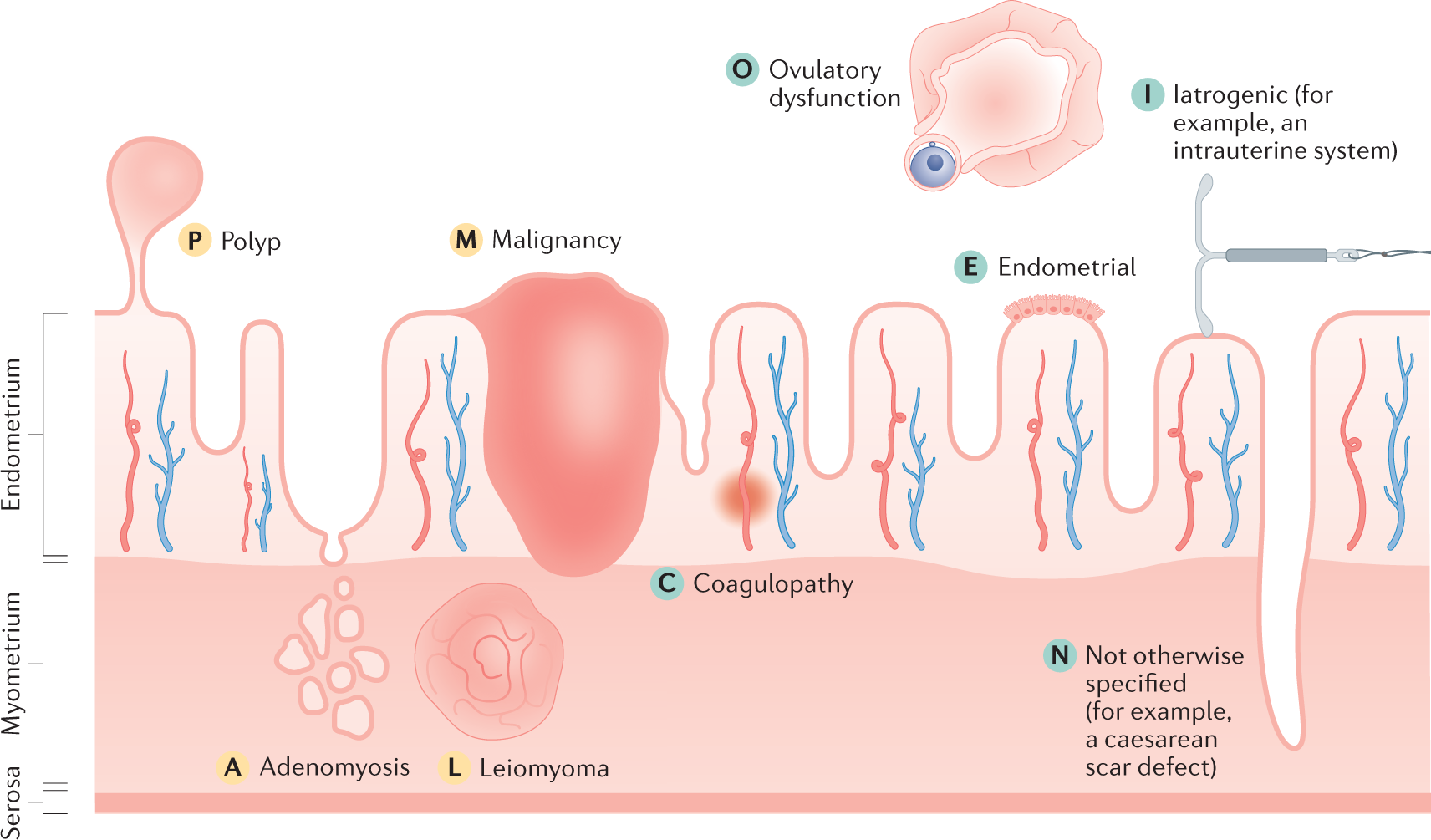
Uterine bleeding: how understanding endometrial physiology underpins menstrual health

Figure Schematic And Microscopic Views Of The Ovarian Cycle 3717

IJERPH, Free Full-Text

PDF) The correlation between body mass index and menstrual cycle disorders in medical students of Udayana University
Cycle Related Changes In The Appearance Of The Endometrial Stripe Ems

The Normal Menstrual Cycle and the Control of Ovulation - Endotext - NCBI Bookshelf

The Hypothalamic-Hypophyseal-Ovarian Axis and the Menstrual Cycle
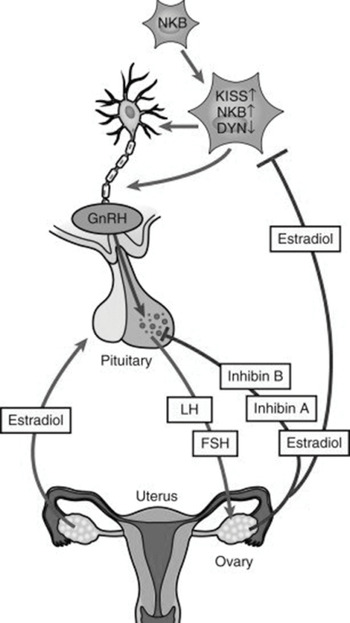
Basic Physiology of Menstrual Cycle and Ovulation (Chapter 1) - Handbook of Contraception and Sexual Reproductive Healthcare

Menstrual Cycle (Ovarian Cycle)
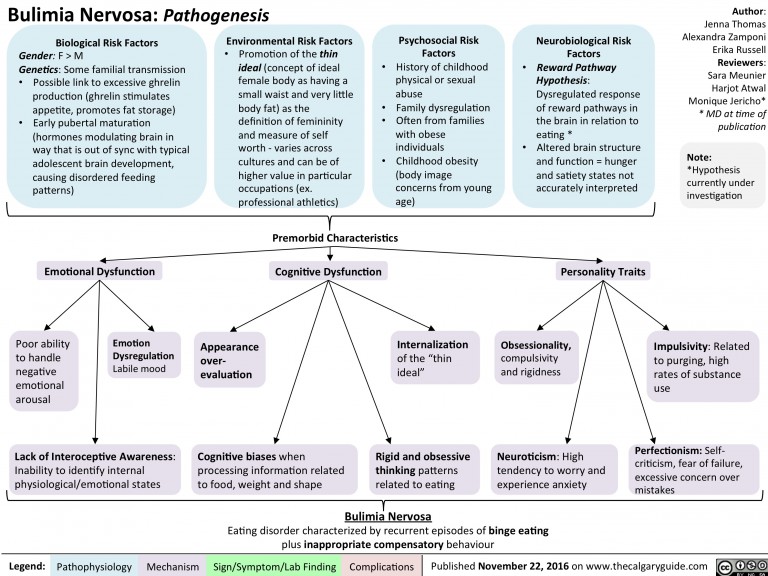
Index of /wp-content/uploads/2016/11
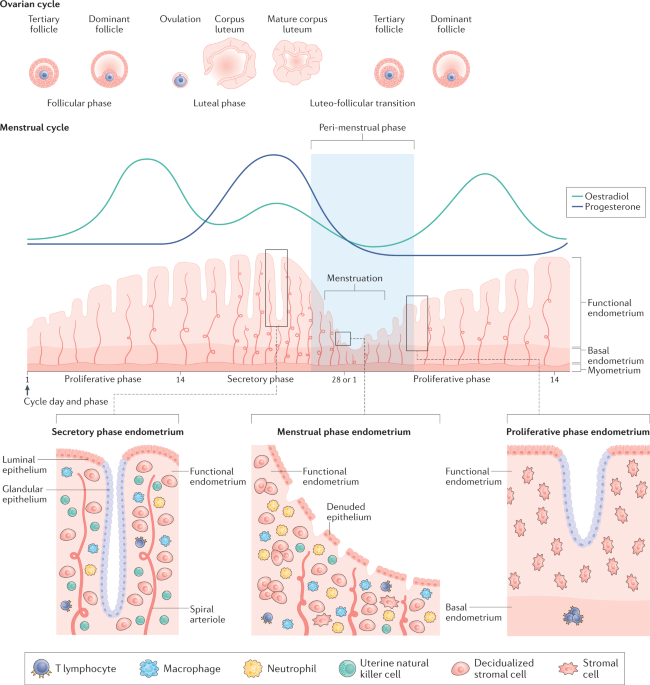
Uterine bleeding: how understanding endometrial physiology underpins menstrual health

Menstrual Cycle Physiology: Correlating the Ovarian and Uterine Cycles

19 NP Cheat Sheets ideas nursing school tips, nursing students, nursing study
Magdy Said Anatomy Series General Embryology Ovarian Cycle Avi V







